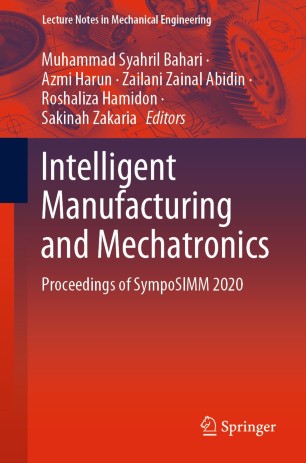
Abstract
Long-term disability can reduce someone’s performance in activities or jobs. Although stroke is not the leading cause of disability, 75% of stroke survivors have decreased activity caused by disability. Serious long-term disability can be treated by using active movements, repetitive tasks, and task-oriented or movement sequences. Evaluation and monitoring the rehabilitation after stroke is the most crucial element to prevent the injury and determine the next step rehabilitation. This study will discuss monitoring arm movement for virtual reality (VR) game rehabilitation based on the trajectory movements. Five participants have contributed to data collection during three sessions and five repetition. Their movement recorded by using Kinect Xbox One sensor with data sampling 10 Hz. The mean absolute trajectory error (ATE) and hand speed movement methods are used to analyze the arm movement during the VR game. Although this study uses healthy subjects, 80% of them have an improvement in the movements, and this condition is proven by the reduced ATE value in each session. Trajectory data provides useful information about arm movements during the rehabilitation of VR games, including movement errors, hand position errors and hand speed to reach targets. Moreover, the mean ATE and hand speed movement able to provide clear information about the development of hand movements in completing the game.
References
- 1.Johnson W, Onuma O, Owolabi M, Sachdev S (2016) Stroke: a global response is needed. Bull World Health Organ 94(9):633–708CrossRefGoogle Scholar
- 2.Clinic M (2017) Stroke rehabilitation: What to expect as you recover. https://www.mayoclinic.org/stroke-rehabilitation/art-20045172
- 3.Vicky G, Charles RL, Garland SJ (2012) Factors that influence muscle weakness following stroke and their clinical implications: a critical review. Physiother Can 64(4):415–426CrossRefGoogle Scholar
- 4.Trombetta M, Henrique PPB, Brum MR, Colussi EL, Marchi ACBD, Rieder R (2017) Motion Rehab AVE 3D: A VR-based exergame for post-stroke rehabilitation. Computer Methods and Programs in Biomedicine, pp. 15–20Google Scholar
- 5.Kultu M, Freeman CT, Hallewell E, Hughes A-M, Laila DS (2016) Upper-limb stroke rehabilitation using electrode-array based functional electrical stimulation with sensing and control innovationsGoogle Scholar
- 6.Krabben T, Molier BI, Houwink A, Rietman JS, Buurke JH, Prange GB (2011) Circle drawing as evaluative movement task in stroke rehabilitation: an explorative study. Neuroeng Rehabil 8(15):1–11Google Scholar
- 7.Caby B, Stamatakis J, Laloux P, Macq B, Vandermeeren Y (2011) Multi modal movement reconstruction for stroke rehabilitation and performance assessment. Multimod User Interface 4(3):119–127CrossRefGoogle Scholar
- 8.Zhang Z, Fang Q, Gu X (2015) Objective assessment of upper limb mobility for post-stroke rehabilitation. IEEE Trans Biomed Eng 63(4):859–868Google Scholar
- 9.Yeh SC, Lee SH, Wang JC, Chen S, Chen YT, Yang YY, Chen HR, Hung YP (2012) Virtual reality for post-stroke shoulder-arm motor rehabilitation: training system & assessment method. In: 14th International Conference on e-Health Networking, Applications and Services (Healthcom), pp 190–195 (2012)Google Scholar
- 10.Cahyadi BN, Khairunizam W, Ibrahim Z, Razlan ZM, Bakar SA, Mustafa WA, Majid SH (2018) Analysis of EMG based arm movement sequence using mean and median frequency. In: International Conference in Electronics, Electrical, Computer, Science and Informatics, Malang – IndonesiaGoogle Scholar
- 11.Cahyadi BN, Khairunizam W, Majid SH, Ibrahim Z, Bakar SA, Razlan ZM (2018) Investigation of Upper Limb Movement for VR based Post Stroke Rehabilitation Device. International Colloquium on Signal Processing & its Applications, Penang – MalaysiaGoogle Scholar
- 12.B. N. Cahyadi, W. Khairunizam, D. S. Sanny, Z. Ibrahim, L. H. Ling, S. A. Bakar, Z. M. Razlan and W. A. Mustafa: Arm Games for Virtual Reality Based Post-stroke Rehabilitation. Lecture Note in Mechanical Engineering, pp. 91–101 (2020).Google Scholar
- 13.Rasidah SN (2017) Design of Arm Movement Sequence for Virtual Reality-Based Upper Limb Management After-Stroke. University Malaysia Perlis, PerlisGoogle Scholar
- 14.Pedraza-Hueso M, Martín-Calzón S, Díaz-Pernas FJ, Martínez-Zarzuela M (2015) Rehabilitation using kinect-based game and virtual reality. Procedia Comput Sci 75:161–168CrossRefGoogle Scholar
- 15.Shahrbanian S, Ma X, Aghaei N, Korner-Bitensky N, Moshiri K, Simmonds MJ (2012) Use of virtual reality ( immersive vs non-immersive) for pain management in children and adults: a systematic review of evidence from randomized controlled trial. Exp Biol 2(5):408–1422Google Scholar
- 16.Sturm J, Engelhard N, Endres F, Burgard W, Cremers D (2012) A benchmark for the evaluation of RGB-D SLAM system. In: Intelligent Robots and Systems, VilamouraGoogle Scholar
- 17.Zhang C, Liu Y, Wang F, Xia Y, Zhang W (2018) VINS-MKF: a tightly-coupled multi-keyframe visual-inertial odometry for accurate and robust state estimation. Sensors 18(11):1–29CrossRefGoogle Scholar
- 18.Jhon, D (2011) Introduction to Coordinate Geometry. https://www.mathopenref.com/coorddist.html. Accessed 26 June 2019
